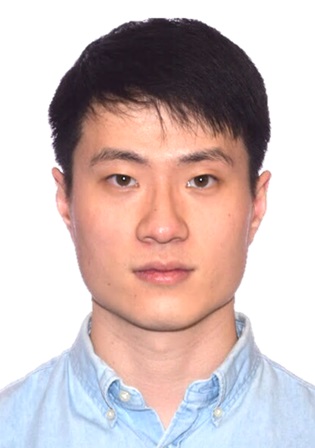Title: Assistant Professor
Country/Region: China
Period: 2024/07/15-2024/08/28
Theme: Study of subtle and complex volcanic deformation by sequential DS-InSAR
Host: Yosuke AOKI
Introduction: Dr. Lei Xie is currently an assistant professor at the School of Geosciences and Info-Physics, Central South University. He received his B.Eng. from China University of Geosciences, M.Sc. from the University of Calgary, and Ph.D. from the Hong Kong Polytechnic University in 2022. His research focuses on space geodesy techniques, particularly interferometric synthetic aperture radar (InSAR), for mapping the deformation of earthquakes, volcanoes, and infrastructures. He is also interested in numerical modeling to decipher surface deformation from space geodetic measurements. During his stay at the ERI, he will work with Prof. Yosuke Aoki to explore seasonal and subtle deformation of volcanoes using advanced InSAR technique and numerical models.
Research Report:
Project )tle: Study of subtle and complex volcanic deforma)on by sequen)al DS-InSAR
Dates: 15 July – 28 August, 2024
With the generous support of ERI and my host professor Yosuke Aoki, I had the opportunity to
visit ERI and conduct the collabora>ve study on subtle and complex volcanic deforma>on from
geode>c measurements. During my stay in ERI, we first focused on improving the distributed
scaDering InSAR method for the seasonal coherent scaDerers, by an op>mized sta>s>cal modality
test and pairwise interferogram selec>on strategy. Second, we inves>gated volcanic deforma>on
at Aluto Volcano, a peralkaline volcano located in the Central Main Ethiopian RiJ, Ethiopia.
Although the site has been reported for caldera unrest events, the subsurface processes remain
unclear. From a deforma>on perspec>ve, the features are highly complex, influenced by
anthropogenic factors such as geothermal development, magma system unrest, riJ-related
extensional faults, and neighboring hydrological factors. We analyzed both ascending and
descending tracks of Sen>nel-1 data over the past decade. Preliminary results show a con>nuous
subsidence across the caldera area, with a velocity of approximately 0.7-0.8 cm/year. We
examined nearby GNSS sites, similar to the InSAR results, a con>nuous subsidence with seasonal
deforma>on varia>ons can be determined. Satellite al>metry data showed meter-level varia>ons
in the nearby Lake Ziway, though these changes alone do not seem sufficient to cause cen>meterlevel seasonal deforma>on, sugges>ng that surface hydrological loadings cannot fully explain the
observa>ons. We will con>nue to collaborate on exploring the deforma>on mechanism at Aluto
Volcano by combining other SAR observa>ons and a beDer error es>ma>on from troposphere,
topography, and phase unwrapping.
Finally, I would like to express my gra>tude to the Earthquake Research Ins>tute, Professor Aoki,
peers and colleagues, and the staff at the Interna>onal Office for their warm hospitality, great
discussions, and excellent arrangements, which made my stay in Tokyo both produc>ve and
enjoyable
Dates: 15 July – 28 August, 2024
With the generous support of ERI and my host professor Yosuke Aoki, I had the opportunity to
visit ERI and conduct the collabora>ve study on subtle and complex volcanic deforma>on from
geode>c measurements. During my stay in ERI, we first focused on improving the distributed
scaDering InSAR method for the seasonal coherent scaDerers, by an op>mized sta>s>cal modality
test and pairwise interferogram selec>on strategy. Second, we inves>gated volcanic deforma>on
at Aluto Volcano, a peralkaline volcano located in the Central Main Ethiopian RiJ, Ethiopia.
Although the site has been reported for caldera unrest events, the subsurface processes remain
unclear. From a deforma>on perspec>ve, the features are highly complex, influenced by
anthropogenic factors such as geothermal development, magma system unrest, riJ-related
extensional faults, and neighboring hydrological factors. We analyzed both ascending and
descending tracks of Sen>nel-1 data over the past decade. Preliminary results show a con>nuous
subsidence across the caldera area, with a velocity of approximately 0.7-0.8 cm/year. We
examined nearby GNSS sites, similar to the InSAR results, a con>nuous subsidence with seasonal
deforma>on varia>ons can be determined. Satellite al>metry data showed meter-level varia>ons
in the nearby Lake Ziway, though these changes alone do not seem sufficient to cause cen>meterlevel seasonal deforma>on, sugges>ng that surface hydrological loadings cannot fully explain the
observa>ons. We will con>nue to collaborate on exploring the deforma>on mechanism at Aluto
Volcano by combining other SAR observa>ons and a beDer error es>ma>on from troposphere,
topography, and phase unwrapping.
Finally, I would like to express my gra>tude to the Earthquake Research Ins>tute, Professor Aoki,
peers and colleagues, and the staff at the Interna>onal Office for their warm hospitality, great
discussions, and excellent arrangements, which made my stay in Tokyo both produc>ve and
enjoyable
View All
Fiscal Year: 2024
Fiscal Year: 2024


